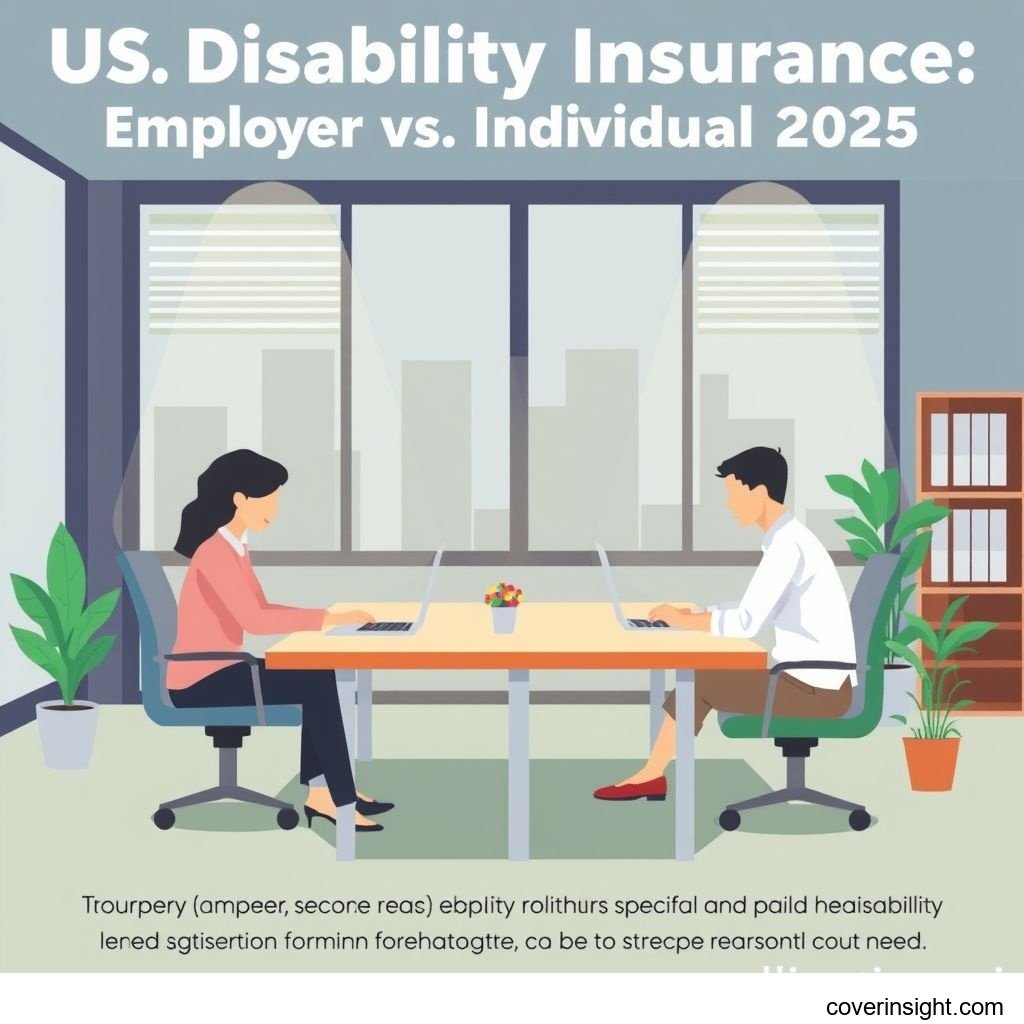Introduction
In the dynamic landscape of 2025, safeguarding your financial future against unexpected health challenges remains a paramount concern. For many in the U.S., long-term disability insurance acts as a crucial financial safety net. While a significant number of Americans might be covered by their employers' group policies, it's vital to understand that these often provide basic coverage, which might not be comprehensive enough for every individual's needs. This leaves a critical gap that individual long-term disability policies are designed to fill, offering more tailored and robust protection. Understanding the nuances between these two options is not just about planning; it's about securing your peace of mind should you ever find yourself unable to work due to a prolonged illness or injury.
Coverage Details
What’s Included
A typical U.S. long-term disability insurance policy is designed to replace a portion of your income – often 50% to 70% of your pre-disability earnings – if you're unable to work due to a covered illness or injury. This income replacement kicks in after an "elimination period" (also known as a waiting period), which is the time you must be disabled before benefits begin, commonly 60, 90, or 180 days. Once active, benefits can continue for a specified "benefit period," which might be 2, 5, or 10 years, or even until retirement age (65 or 67), depending on the policy you choose. Policies often include features like a "future increase option" to adjust coverage with income growth, and "cost-of-living adjustments" (COLA) to help your benefits keep pace with inflation. For a broader perspective on various insurance types, you might consult Insurance Resources Global.
Common Exclusions
While comprehensive, long-term disability policies do have their limits. Common exclusions typically include disabilities resulting from: pre-existing conditions that weren't disclosed or are within a specific look-back period (e.g., 12-24 months prior to coverage), self-inflicted injuries, acts of war or participation in a riot, and sometimes disabilities arising from normal pregnancy (though complications of pregnancy are usually covered). It's also important to note that many policies do not cover disabilities arising from dangerous avocations or criminal activities. Always read the fine print, as a clear understanding of what's not covered is as crucial as knowing what is.
Cost Analysis
Price Factors
The premium for long-term disability insurance is influenced by several key factors, much like other insurance products. Your age and health status play a significant role; younger, healthier individuals typically pay less. Your occupation also matters immensely: a surgeon, for instance, might pay more than an accountant due due to the higher risk of a disability impacting their ability to perform their job. The amount of monthly benefit you wish to receive, the length of the elimination period (shorter periods mean higher premiums), and the duration of the benefit period (longer periods mean higher premiums) are also major determinants. Furthermore, if you opt for riders like COLA or future increase options, your premium will increase. According to data from the Council for Disability Awareness, just over 1 in 4 of today's 20-year-olds will become disabled before reaching age 67, underscoring the risk many face and why these policies are priced accordingly.
Saving Tips
Want to save a few bucks without sacrificing essential coverage? Consider extending your elimination period; while you'd wait longer for benefits, your premiums would be lower. Opting for a shorter benefit period (e.g., 5 years instead of until age 65) can also reduce costs, though this comes with higher risk. If your employer offers a group long-term disability policy, take advantage of it. While often basic, group rates are generally much lower than individual policies. You can then "top up" your coverage with a supplemental individual policy if needed, potentially saving money compared to buying a full individual policy outright. Maintaining good health through regular exercise and a balanced diet can also make you eligible for preferred rates. For more guidance on choosing insurance providers, your State Insurance Departments can offer valuable local insights.
FAQs
-
How much does employer vs individual policies cost?
Employer-sponsored group policies are often significantly cheaper, sometimes even free, as the employer typically subsidizes or fully covers the premium. Individual policies, by contrast, are fully paid by you and can range from 1% to 3% of your annual gross income, depending on the factors mentioned above. However, individual policies offer much more customization and portability.
-
What affects premiums?
As detailed earlier, age, health, occupation, the benefit amount, the elimination period, the benefit period, and any additional riders (like COLA or future increase options) are the primary drivers of your long-term disability insurance premiums.
-
Is it mandatory?
No, long-term disability insurance is generally not mandatory in the U.S. However, while it's not legally required like auto insurance in most states, it is highly recommended by financial experts. Consider Sarah, a marketing executive in her late 30s living in Arizona. She always thought disability wouldn't strike her, relying solely on her employer's basic group policy. When a severe car accident left her unable to work for over a year, she quickly learned that her group policy's coverage was insufficient to maintain her lifestyle, covering only 60% of her base salary and nothing for her commissions. An individual policy could have bridged that crucial financial gap, preventing her from having to dip into her retirement savings.
-
How to choose?
Begin by assessing your financial needs: How much income do you need to replace to cover essential living expenses? Then, evaluate your employer's existing coverage, if any. Look at your occupation's risk level. Compare quotes from several reputable insurers, paying close attention to definitions of "disability" (e.g., "own occupation" vs. "any occupation") and policy riders. Consulting a qualified financial advisor who specializes in insurance can also be immensely helpful. For more comprehensive information, you can always visit US Insurance Home.
-
Consequences of no coverage?
Without adequate long-term disability coverage, a prolonged illness or injury could quickly decimate your savings, including retirement funds. You might struggle to pay essential bills like rent/mortgage, utilities, and groceries. Many Americans rely on Social Security Disability Insurance (SSDI) in such situations, but the application process is notoriously stringent and lengthy, with a significant percentage of initial claims denied. For example, the Social Security Administration's own data indicates that initial disability applications face a high denial rate, often requiring multiple appeals. This makes private long-term disability insurance a vital safeguard to prevent financial ruin. For general health insurance questions, you might find resources on Healthcare.gov.
Author Insight & Experience
Based on my experience observing countless financial plans and real-life scenarios across the U.S., one of the most overlooked yet critical components is long-term disability insurance. It’s easy to think, "That won't happen to me," but the statistics paint a starkly different picture. As someone living in the US, I've seen firsthand how a sudden illness or accident can completely upend a family's financial stability, even for those with seemingly robust savings. An emergency fund is great for a few months, but what happens when a disability lasts for years? Disability insurance isn't just another policy to tick off a list; it's the bedrock of a resilient financial strategy, protecting your most valuable asset: your ability to earn an income. It’s about building a fortress around your future, not just a fence.







Comments